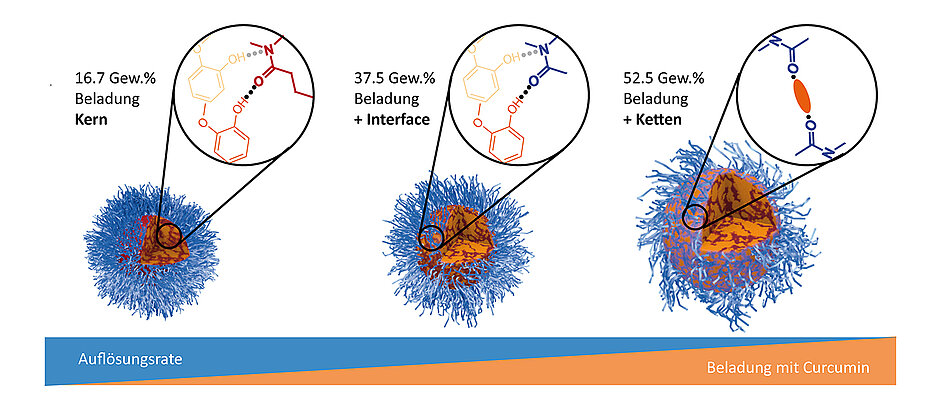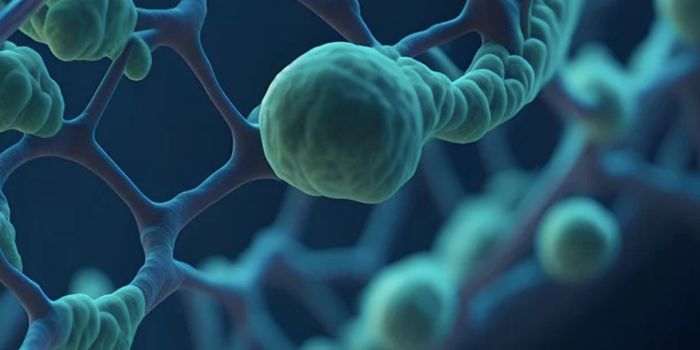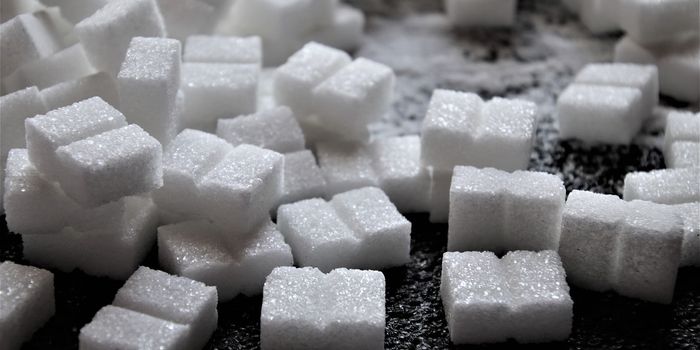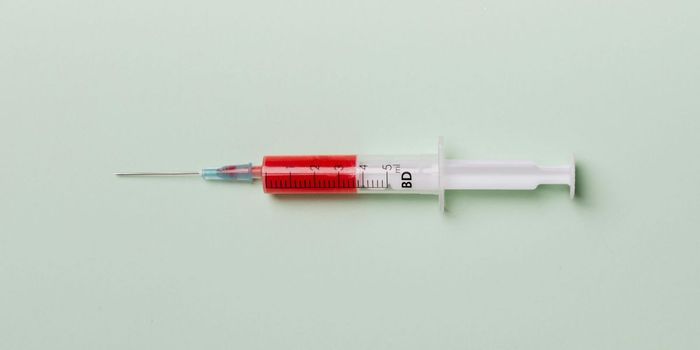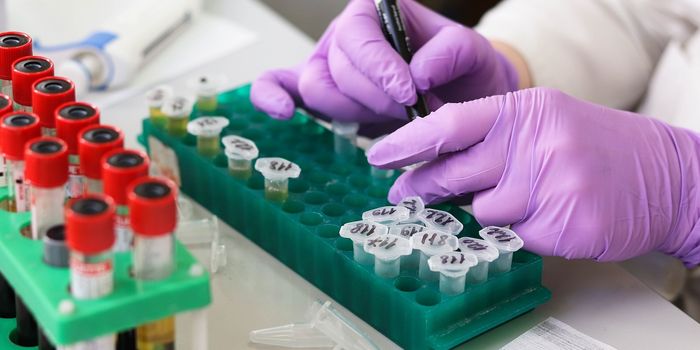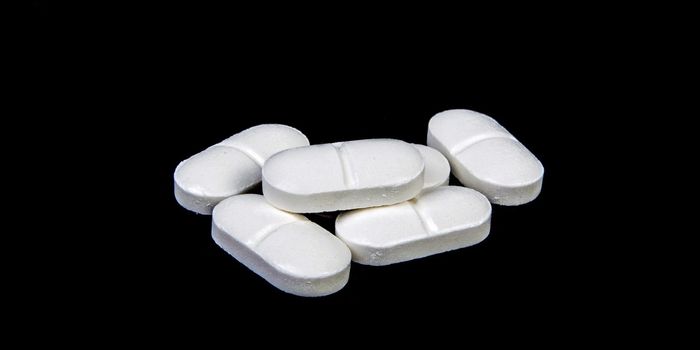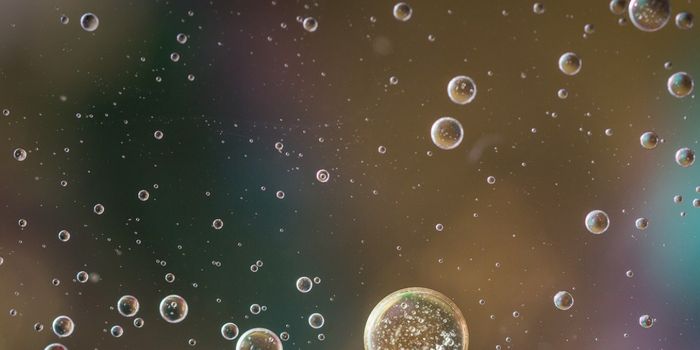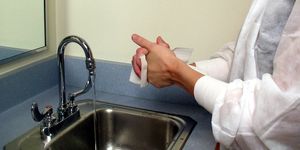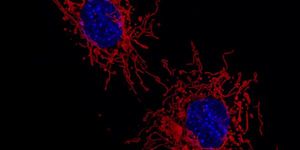Advancing Nanocontainers for Drug Delivery
Nanocontainers work by delivering drugs to a localized region in the body, many chemotherapeutics work in that matter. The high specificity of this drug delivery method often is advantageous in avoiding unusual and unwanted side-effects. However, there is always room for improvement--"My group wants to understand in as much detail as possible how the container molecules and the active substances arrange and what properties result from this," says chemistry professor Ann-Christin Pöppler from Julius-Maximilians-Universität (JMU) Würzburg in Bavaria, Germany.
As the loading with curcumin (yellow) increases, the dissolution rate of the containers made of polymeric micelles (blue) decreases. (Image: Ann-Christin Pöppler / Universität Würzburg)
The latest research regarding advancing drug delivery includes a chain of molecules known as polymeric micelles that assemble into spherical structures. "Little is known about the molecular origin of the properties of these structures," says Pöppler. They are already on the market as drug containers and have been used in cosmetics and cancer therapy. The micelles work when they touch fat-soluble products causing them to form a "water-loving" outer shell and a "fat-loving" core.
Learn more about micelles:
Findings were published in the scientific journal Angewandte Chemie which describe the polymeric micelles used in the study. The micelles were derived from substance classes poly(2-oxazoline)s and poly(2-oxazine)s. One of the active substances was taken from the Curcumin spice plant as it is easy to spectroscopically visualize.
Source: Science Daily
